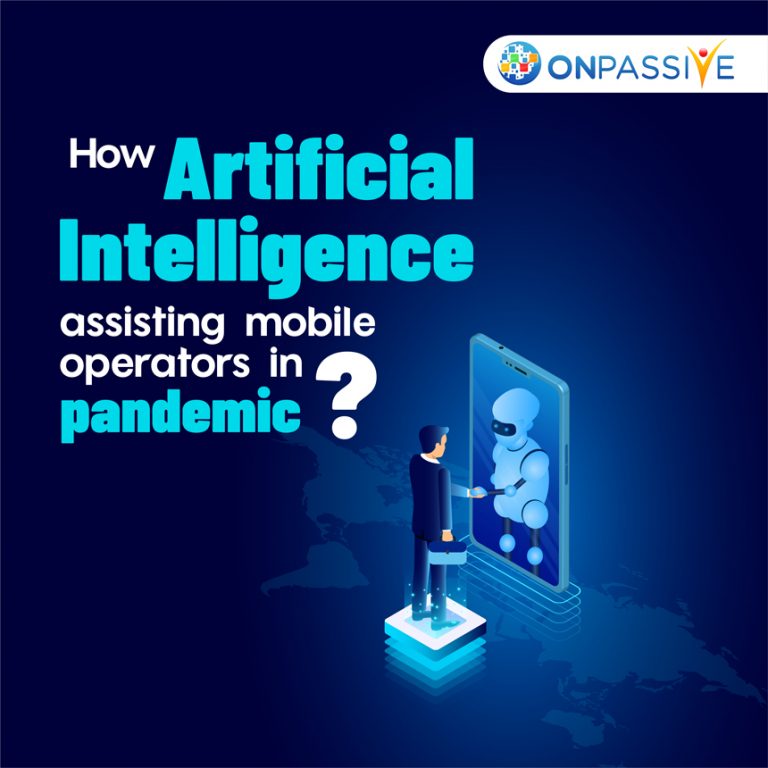
The Coronavirus/COVID-19 pandemic more than any other event in human history has exhibited importance that telecommunications infrastructure performs keeping business, government, and society connected.
This unexpected social and financial disruptions induced at pandemic made people across the globe that rely on technology
- For knowledge
- For social distancing
- Remote works.
Communications Service Providers and media establishments are promptly responding to the economic and social impact of COVID-19.
Telecommunication sectors have a unique opportunity that has fundamental changes in their relationships and is confident with customers if taken a suitable action.
Use of AI in Telecommunications
The complexity of communication networks progressed with the deployment of innovative services, such as Software-Defined Wide Area Networking (SD-WAN), and Network Functions Virtualization.
This massive surge in customer expectations and bandwidth requirement due to current COVID-19 pandemic has pushed CSPs to increase the intelligence on network operations, planning and optimizations.
This increase in traffic volume, network size, service complexity, and bandwidth compels CSPs to implement new approaches for network operation and customer assurances.
Telecom service providers believe that artificial intelligence (AI) and machine learning (ML) are essential for automating network operations and enhancing the customer experience. Raising AI and ML Trends
Researchers in communication networks perceive into AI and ML techniques in optimizing network architectures, controlling, administering and enabling more in functioning.
Role of AI in Telecommunications during Pandemic
AI helps telecom industry reinvents customer relationships by recognizing personalized needs and engaging customers through one to one contact.
It helps in configuring fixed-line and mobile-network bundles that combine VPN, teleconferencing, and productivity apps. These bundles for commercial customers whose primary use in telecommunication services shifted from office to home through fixed-line demands.
AI also enables operators to predict demand accurately and anticipate network load by adjusting capacity and throughput automatically.
Over the next 12 to 18 months, telecommunications faced many challenges on four fronts across the globe.
These challenges are interlinked and help in tackling:
- Network Operations Monitoring & Management
- Enhanced Customer Service and Network Operations
- Fraud Mitigation and Cybersecurity
Each of these explained in detail.
1. Network Operation Monitoring
AI and ML technologies are emerging in the networking domain-relevant that addresses the challenges of virtualizations and cloud computing application.
The current increased complexity in networked application and functions drives the need for enhanced network automation and agilities.
Network automation platform such as Open Networking Automation Platform (ONAP) incorporates AI techniques delivers efficient, updated and precise management operation.
Examples of network-centric applications of Artificial Intelligence and Machine Language include:
1. Performance monitoring and optimization
2. Anomaly detection for administration, operations, maintenance & provisioning
3. Trouble ticket action guidance
4. Autonomous resolution of trouble tickets (self-healing)
5. Prediction of network faults and errors
6. Network capability planning and congestion predictions.
Machine Language supports network operations identifying errors such as diagnosing root cause, analyzing Service-Level Agreement breaches, filter-out noise (false alarms) and recommend solutions.
2. Enhanced Customer Services and Network Operation
Due to current circumstances, telecom service providers have no choice to automate network maintenance issues and customer services so that they expedite a move towards automated predictive operation and service.
Considering all these concerns, telecom companies incorporates numerous data points such as incidents per network loading and previous issues with similar networking. These data points provide precisely and focused support for higher-valued customers.
AI is incorporated to accelerate rethinking of customer interactions improving the customer experiences. These tools allow consumers to deliver services supporting customers instantaneously and efficiently by chatbots and smart searches.
Deploying AI-based service is a four-step procedure:
- Implementing a simple self-service menu using search technology and AI-based chatbot on every platform.
- Digital interactions such as chat with a human agent ensure the transition from bot to human.
- Deflecting the remaining voice calls by text or deploying the AI-bot over a voice channel.
- Use the voice channel to tackle the thorny issue and offers premium service, both required for a human agent.
AI-based solutions will enable the automated management and maintenance of networks, relieving pressure on the IT support teams.
3. Fraud Mitigation and Cybersecurity
Fraud and Security patch-up costs the global telecom industry thirty-eight billion dollars annually, majorly affecting the industry’s reputation.
This level of security identifies an event, a trigger, or consequences based on specific existing data that has accumulated through machine learning technology.
Automated detection and blocking proceeds simultaneously in protection with real-time, not after the breach occurred.
This Artificial Intelligence Technology lessens false alerts that exhaust valuable time and money, as it translated to a reduced workload enabling an enterprise’s IT support team to focus on other issues that require cognitive problem solving or manual intervention.
AI and ML are also being combined and integrated into other operations of contact centre technology, such as routing, which can also promote greater security. With consumers intelligently routed to agents, there is a significantly reduced risk of attacks on agents who lack relevant customer insights and history.
AI technology in the telecommunications industry is increasingly helping CSPs monitor, optimize, and maintain not only IT infrastructure but also customer support operations.
The COVID-19 pandemic can see as a moment of reckoning, for telecom companies, which is why they should implement technological innovations such as AI and ML to accelerate their transformations and meet customer requirements.


